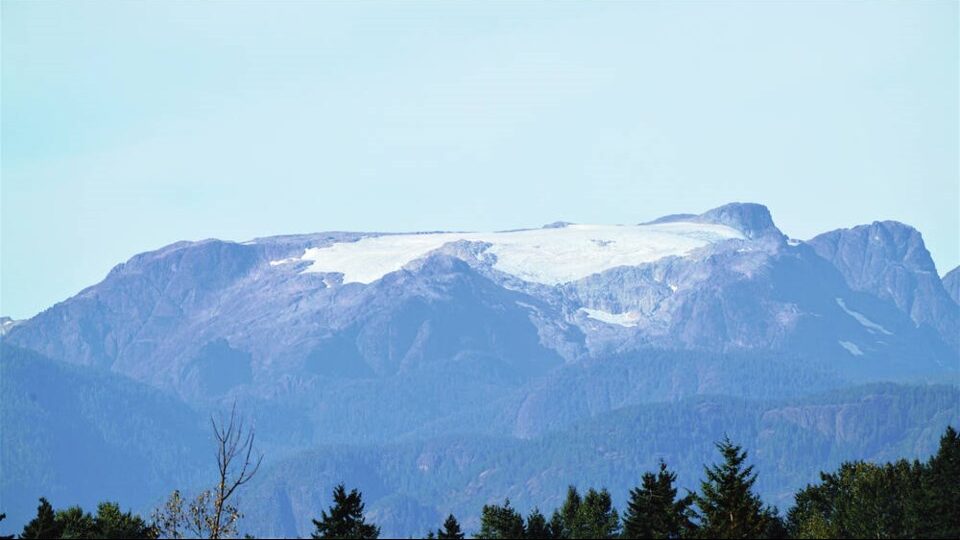There are new summer features in the Comox Glacier. They’re bare, rocky peaks that we can only see because the ice is melting. They’re parts of the mountain we’ve never seen before.
But the Comox Glacier isn’t the only one that’s melting. There are about 40 of these ancient ice packs on VanIsle. They aren’t very big. And they’re disappearing fast.
Brian Menounos is a professor of Earth sciences at the University of Northern BC. “They are receding before our eyes,” he told the Times Colonist. He’s spent years studying glaciers on BC’s coast.
Menounos figures all of the Island’s ice packs will be gone by the middle of this century. That includes the iconic Comox Glacier. This symbol of the valley is slowly melting away.
The trouble with those rocky peaks is that they’re dark. Dark material absorbs more energy from the sun and gets hotter. Those hot mountain rocks melt the ice, which leads to more hot rocks. They start to break the glacier apart, making it melt even faster.
Events like last year’s heat dome don’t help. Really hot weather puts the melting on fast forward.
“Soon, it just won’t be there,” says Menounos.
He also says “human-induced climate change” is causing the melt. As the planet warms up, we get less snow and more rain over the winter. That makes it harder for the glacier to rebuild.
And so, it continues to shrink in area and mass.
Fred Fern is a local retired logger. He’s been taking pictures of the Comox Glacier every year since 2013. He says changes are easy to see in the photos.

Photo credit: Grant Callegari / Hakai Magazine.
He also studies the glacier using satellite imagery on Google Earth.
“Last summer’s loss was the worst I’ve ever seen,” he told the Times Colonist. “That’s vertical feet loss—thickness. It’s not only melting on the outer edges, but now inside out with the exposed rock.”
He said the Comox Glacier “is almost unrecognizable.” The area between Mount Albert Edward and Comox used to have 25 smaller glaciers. According to Fern, they’re down to four or five.

“It’s climate change, no question,” he said.
Johannes Koch is a glaciologist at Kwantlen Polytechnic University. He’s spent the past 20 years studying glaciers in Garibaldi Park and the Pemberton Icefield. He sees the same problems on the mainland.
“The change in the last 150 years, some of it is so fast we haven’t seen it in the last 10,000 years,” he told the Times Colonist. “Most ecosystems are good at adapting to things, but they need time.”
Time isn’t something we have, apparently.
VanIsle salmon need the cold water from glaciers if they’re going to thrive. There won’t be any glacier-fed streams in the near future.
And it’s not only critters who will have to adapt.
The Comox Glacier supplies drinking water for thousands of folks who live in the valley.
How will we adapt? Only time will tell.
The Glacier is also a symbol of the region. It’s part of what makes this place feel like home. And it’s hard to watch something like that disappear.









